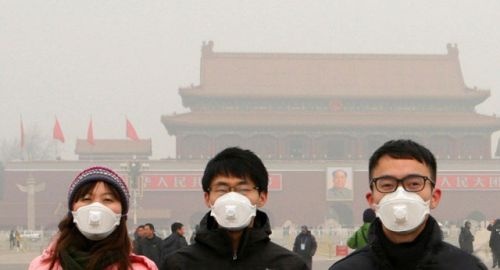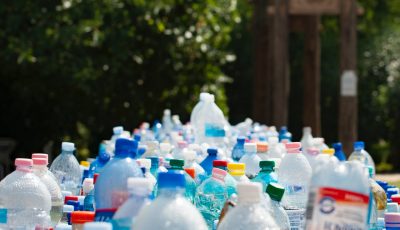China takes fresh approach to pollution
By Alex Kirby
LONDON, 15 March, 2017 – China’s air pollution makes many of its towns and cities almost intolerable for their inhabitants. A 2015 report put the numbers killed daily by foul air at 4,000 to 5,000. But a lot of ingenuity is going into making life better for urban dwellers.
One novel scheme is part of a wider push to use low-energy design and technology, both to cut the cost to residents of the energy they use and to reduce global emissions of carbon dioxide, the most abundant of the greenhouse gases emitted by burning fossil fuels, which are driving climate change.
The scheme works by using ventilation with filtered air to reduce the level of particulate matter indoors, a serious health problem in many Chinese cities, where the concentration of small particles (PM2.5) is a serious health risk, particularly to children.
Made in China
As China will account for about half of all new construction globally in the decade ahead, including many new homes, there is huge scope for using the new technology far more widely, both within China and abroad.
The ventilation is a key element of an initiative by the Shanghai Landsea Planning & Architecture Design Company, or Landsea Design, an engineering, design and planning consultancy specialising in affordable housing.
Landsea’s systems provide a continuous supply of fresh filtered air to each room, at controlled temperature and humidity, and also extract stale air along with particles produced from cooking.
The company’s current work concentrates on multistorey apartment buildings for high-density urban housing. It is primarily designed for China’s central belt, where houses need to be able to adapt to summers as hot as 35°C as well as winters as cold as -5°C.
“The services provided by Landsea have been used
in more than 30 property developments since 2011,
giving 78,000 people (24,000 households)
more comfortable and energy-efficient homes”
Landsea incorporates low CO2 design throughout its processes, including cutting the need for heating and cooling by insulation and air-tight outer layers to buildings. It uses low-cost sustainable energy supply technologies, including solar water heating and ground-source heat pumps.
The services provided by Landsea have been used in more than 30 property developments since 2011, giving 78,000 people (24,000 households) more comfortable and energy-efficient homes. Compared with current building standards, these homes have cut greenhouse gas emissions by about 32% and save around 48,000 tonnes of CO2 a year.
Energy use in China is normally measured against housing from the 1980s, which in the central belt of the country uses about 140kWh per square meter per year, resulting in the emission of about 120kg/sq m of CO2 per year. Current buildings are required to emit less than 50% of this, or 60kg/sq m of CO2 per year.
The 32% cuts in GHG emissions achieved by Landsea’s integrated energy-saving approach mean the permitted level of 60kg/sq m of COs becomes 40 kg. To date, about 2.5 million sq m of housing has been built using Landsea’s services, saving around 200,000 tonnes a year of CO2 compared with 1980s homes.
Landsea was one of the winners of a 2016 Ashden Award for Sustainable Buildings. The awards are an annual international competition to encourage sustainable energy. Since their foundation in 2001, they have collectively improved the lives of about 79 million people worldwide, saving more than 10 million tonnes of CO2 emissions annually.
Sustainable winners
The awards are a globally recognised measure of excellence in the field of sustainable energy and winners receive tailored support to help scale up their work, and a prize of up to £20,000 ($24,500). This year’s winners will be announced on 15 June.
Ashden’s 2017 sustainable buildings contestants are based in Uganda, Malaysia and the UK. One is the Haileybury Youth Trust (HYT), which trains young Ugandans to build using low-cost blocks made of compressed earth instead of environmentally damaging fired bricks, preventing deforestation and drastically reducing CO2 emissions.
Other entrants include the Malaysian firm T R Hamzah and Yeang Sdn Bhd, a user of green building design practices for more than 30 years, and two from the UK. The Manchester-based Carbon Co-op is a community-driven society helping its members achieve major energy and CO2 savings by retrofitting their homes. A recent deep retrofit programme carried out by Carbon Co-op achieved average savings per property of around £1,000 ($1,225) a year.
The other UK candidate is Passivhaus, whose buildings achieve significant energy savings while also providing high levels of comfort and health: the main features include enhanced insulation, high-quality windows, air tightness and controlled ventilation. – Climate News Network








